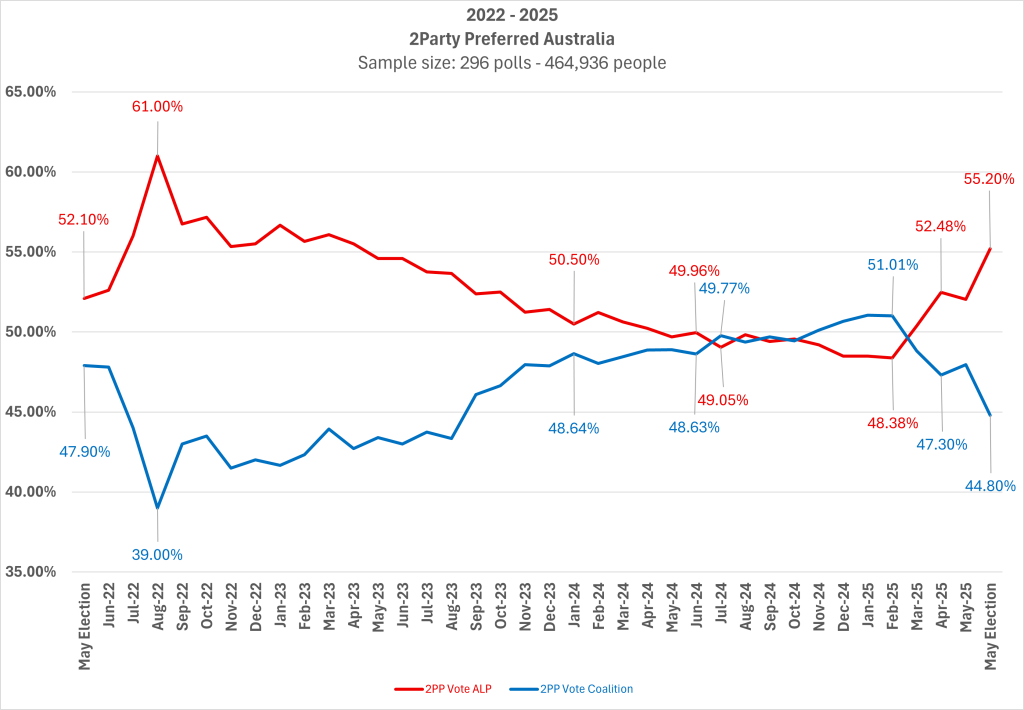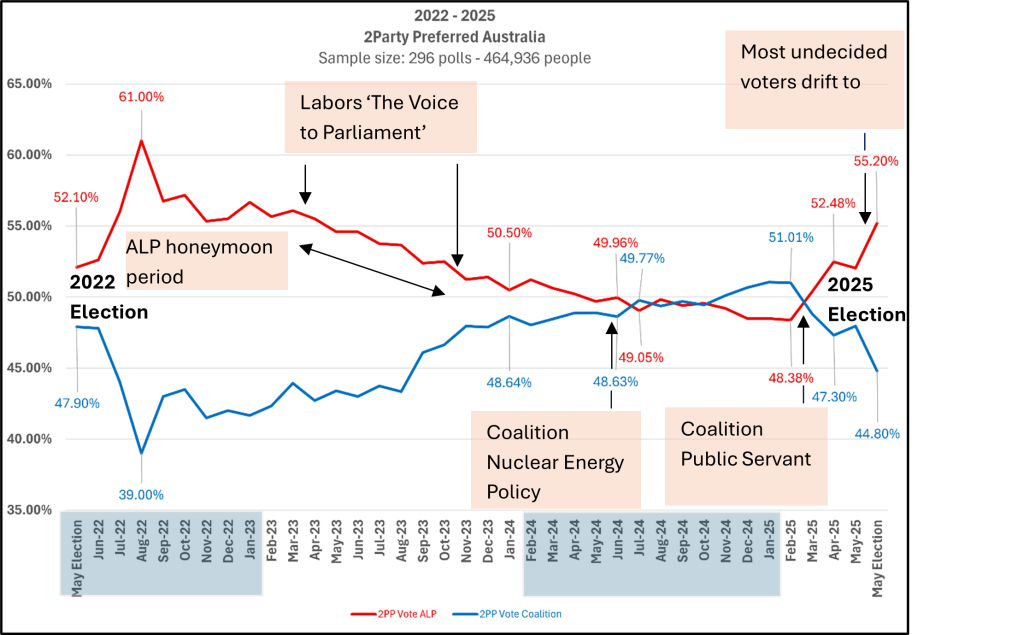Australian Federal Election 2025
Post-Election Analysis: How the 2025 Federal Election Was Won and Lost
In the aftermath of the 2025 Federal Election, much has been written by political commentators about how the Coalition squandered a commanding lead, or how Labor staged a remarkable comeback. At Australian Strategic Advisory (ASA), we have taken a different approach—one based on hard data, not speculation.
ASA compiled every federal poll by a major polling company and conducted between the start of the Albanese Government in 2022 and the 2025 Federal Election. This dataset covers:
- 296 polls
- 464,936 voters sampled
- Polling companies: Newspoll, Roy Morgan, Ipsos, Essential, Freshwater Strategy, Resolve Strategic, RedBridge/Accent, YouGov and DemosAU
This is the most comprehensive longitudinal analysis of any modern Australian federal election. It identifies key moments where voter sentiment shifted sharply—and why.
Key Turning Points That Shifted the Election Outcome
The data reveals four pivotal developments between 2023 and 2025 that had direct, measurable impacts on polling trends:
- The Voice to Parliament Referendum
- On 30 March 2023, Prime Minister Albanese announced a referendum to enshrine a First Nations advisory body in the Constitution.
- At the time, Labor was enjoying a strong polling position—above 56% in two-party-preferred (2PP) terms.
- Over the next six months, support eroded steadily. Following the referendum’s defeat on 14 October 2023, Labor’s 2PP fell to 51%, marking the end of their post-election honeymoon.
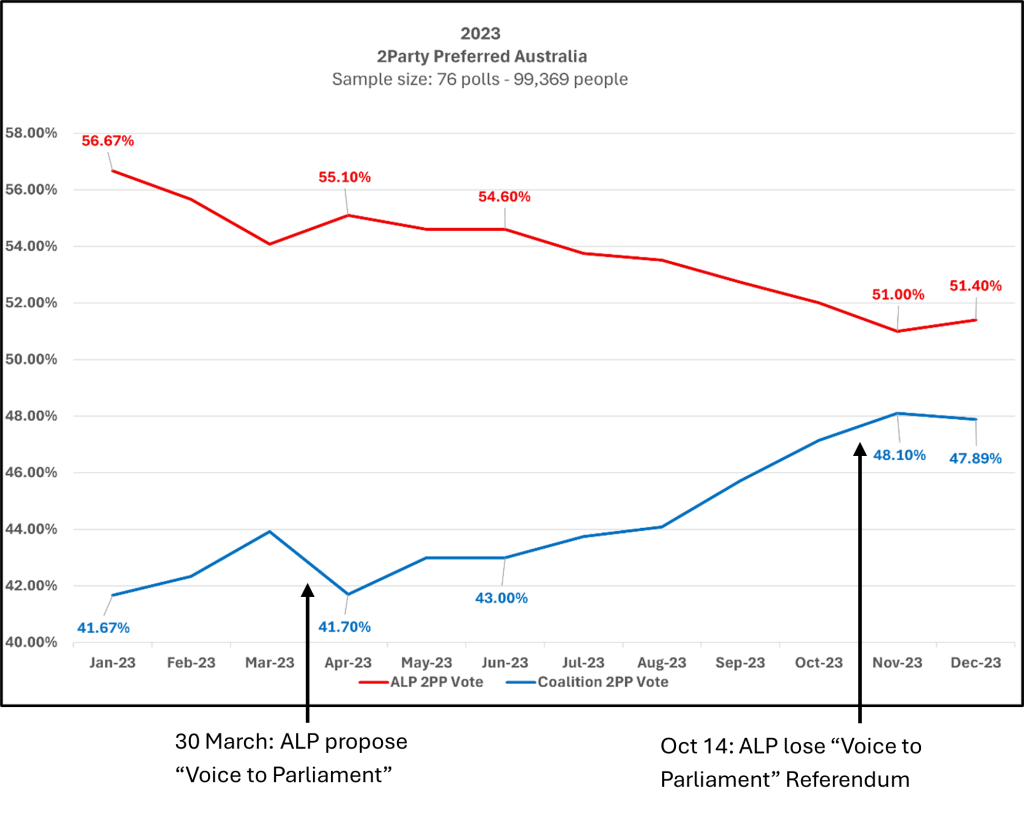
- Coalition’s Nuclear Energy Policy
- Officially launched on 19 June 2024, the Coalition’s nuclear policy dominated headlines and framed the energy debate.
- While it energised the Liberal base, the Coalition’s nuclear policy also quickly became the dominant issue in the national energy debate.
- Despite Labor’s efforts to discredit the policy, polling trends suggest the Coalition won the argument with voters—particularly among undecided and regional constituencies.
- The policy was seen by some as a credible long-term solution to energy reliability and cost concerns. It helped solidify the Coalition’s support through late 2024, allowing them to edge ahead of Labor in the polls.
- The policy shift contributed to a cost-of-living narrative that intensified between October and December 2024, as interest rates peaked.
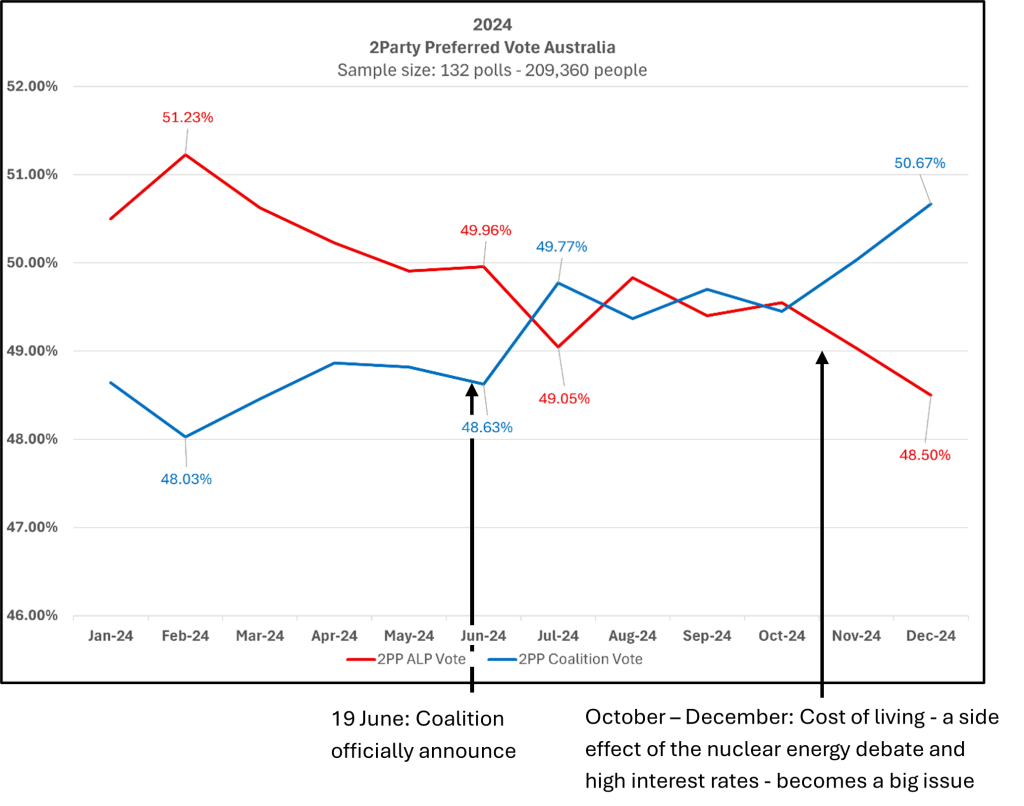
- Coalition’s Public Sector Cuts & Work-from-Home Reversal
- On 27 February 2025, two Coalition MPs revealed plans to sack 30,000–40,000 public servants and scrap work-from-home.
- Peter Dutton confirmed the policy on 27 March 2025, just weeks before the election. It proved to be the pivotal turning point in the election as the 2025 graph shows.
- The announcement was widely reported and proved deeply unpopular, particularly with urban and professional voters—many of whom were previously disengaged or undecided.
- Some of voters also thought the government had planned to ban work from home in the private sector. By the time this was refuted, more damage to the Coalition had been done.
- With 2.5 million people in Australia working in some capacity in the public sector, this was the significant turning point in the election.
- Those 2.5 million people have family members and most of them also vote – and they turned to Labor.
- The Undecided Voter ‘Miss’
- Across multiple pollsters (notably Essential), 5–6% of voters remained undecided in the final weeks.
- These voters ultimately broke overwhelmingly for Labor, handing them a more decisive win than expected.
- This late swing was not adequately picked up by most commentators or internal campaign tracking.
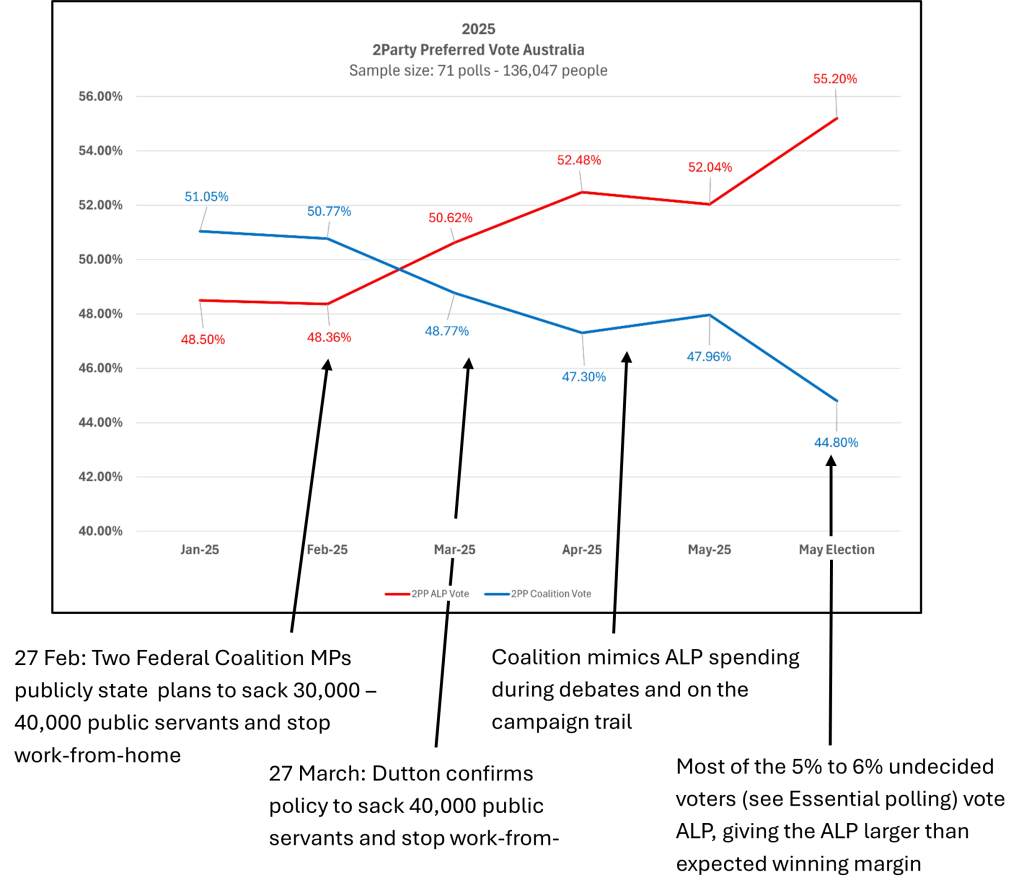
Election Narrative: Momentum Lost and Gained
- In 2022, Labor’s honeymoon phase extended 10 months post-election, with a peak 2PP of 61%. Albanese was seen as a stable and likeable leader, with no major political missteps.
- Peter Dutton’s early leadership was underestimated. While initially framed by Labor as unelectable, polling in late 2023 and early 2024 showed the Coalition making steady gains.
- By mid-2024, polling narrowed considerably, with the Coalition overtaking Labor—particularly as the nuclear policy took centre stage.
- But a series of self-inflicted errors—from public sector cuts to ill-timed announcements—undermined their momentum just as the election campaign intensified.
- Meanwhile, Labor ran a slick, disciplined campaign. Their “Mediscare 2.0” and cost-of-living messaging struck a chord, while Dutton was increasingly linked by Labor to Donald Trump, a tactic that worked in key metro seats.
Final Takeaway
While this election was not decided by a single issue, the data makes one turning point unmistakably clear: the Coalition’s announcement to sack 30,000–40,000 public servants and cancel work-from-home arrangements marked the moment the tide turned.
This policy triggered a sharp backlash among undecided and centrist voters—particularly in urban and professional electorates—and set off a chain reaction that steadily eroded the Coalition’s narrow lead. It reversed months of momentum built through effective campaigning, including the successful nuclear energy debate.
Crucially, the Coalition either failed to detect or chose to ignore the polling damage in key marginal seats. A stark example: Opposition Leader Peter Dutton appeared unaware that his own seat—and those of neighbouring colleagues—had become vulnerable.
In the end, Labor did not win because they were popular. They won because the Coalition lost the trust of soft voters at the worst possible time. Labor ran a cautious, tightly disciplined campaign and positioned itself as the safer, more stable choice.
The evidence is clear—if you know where to look.
